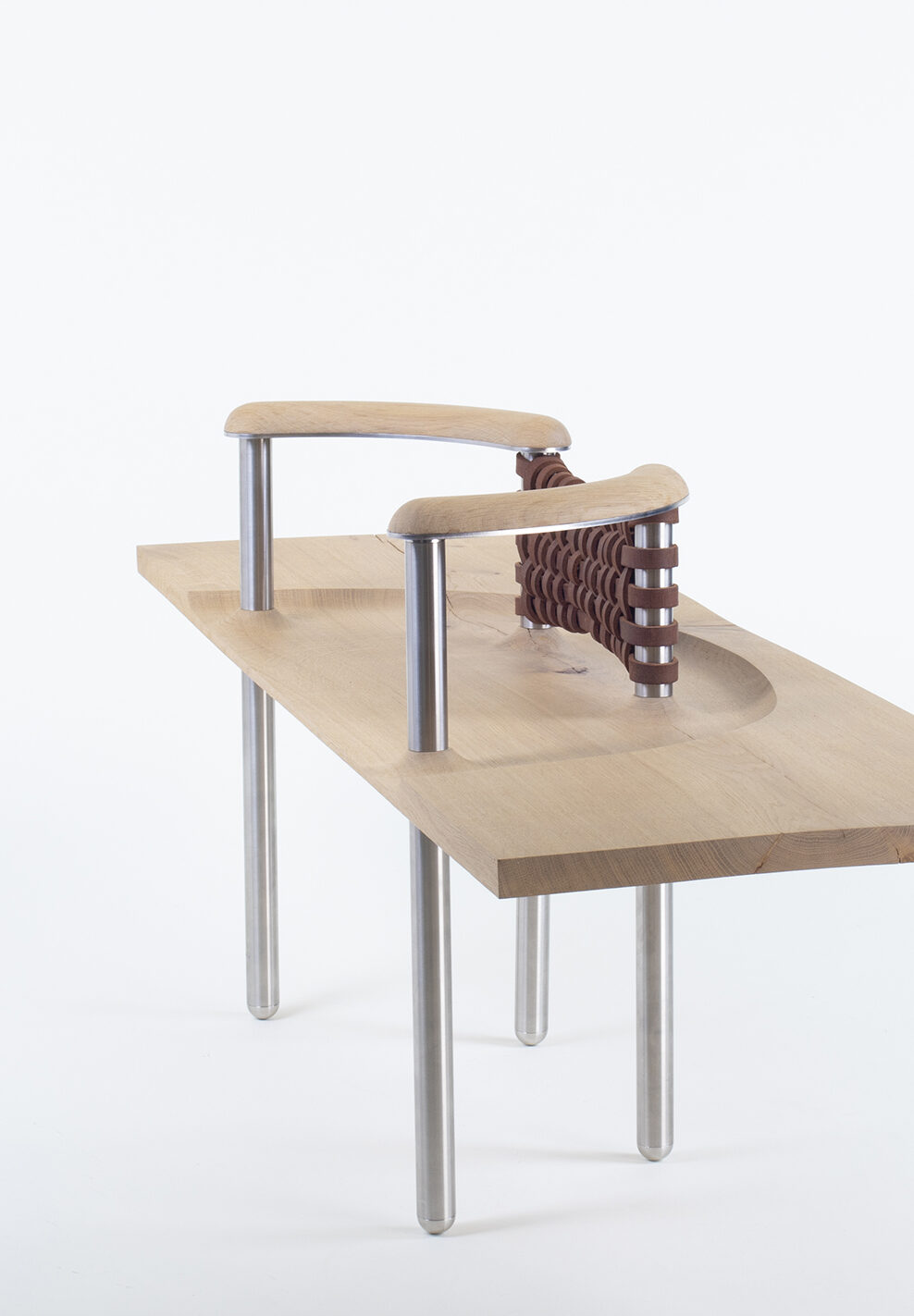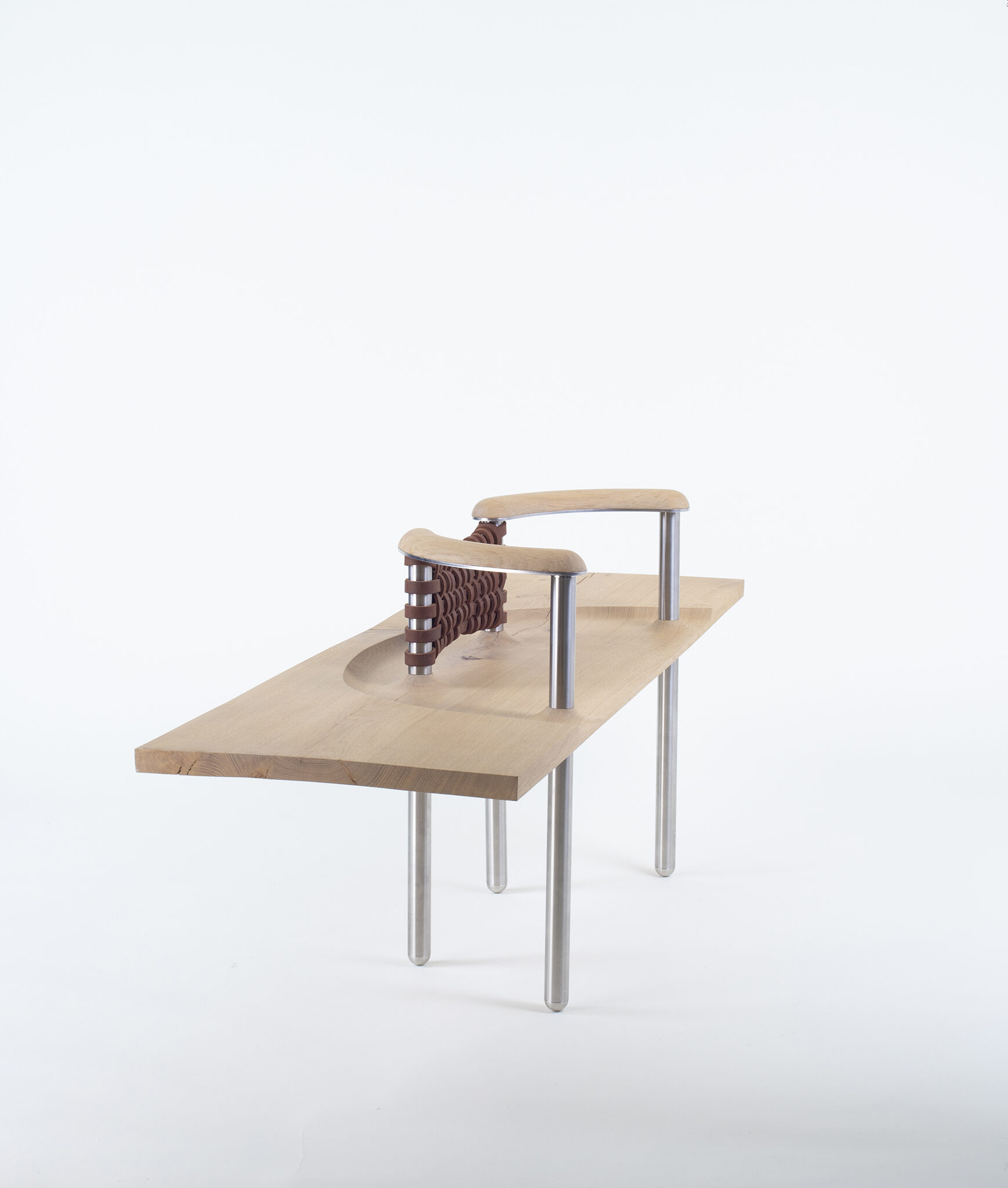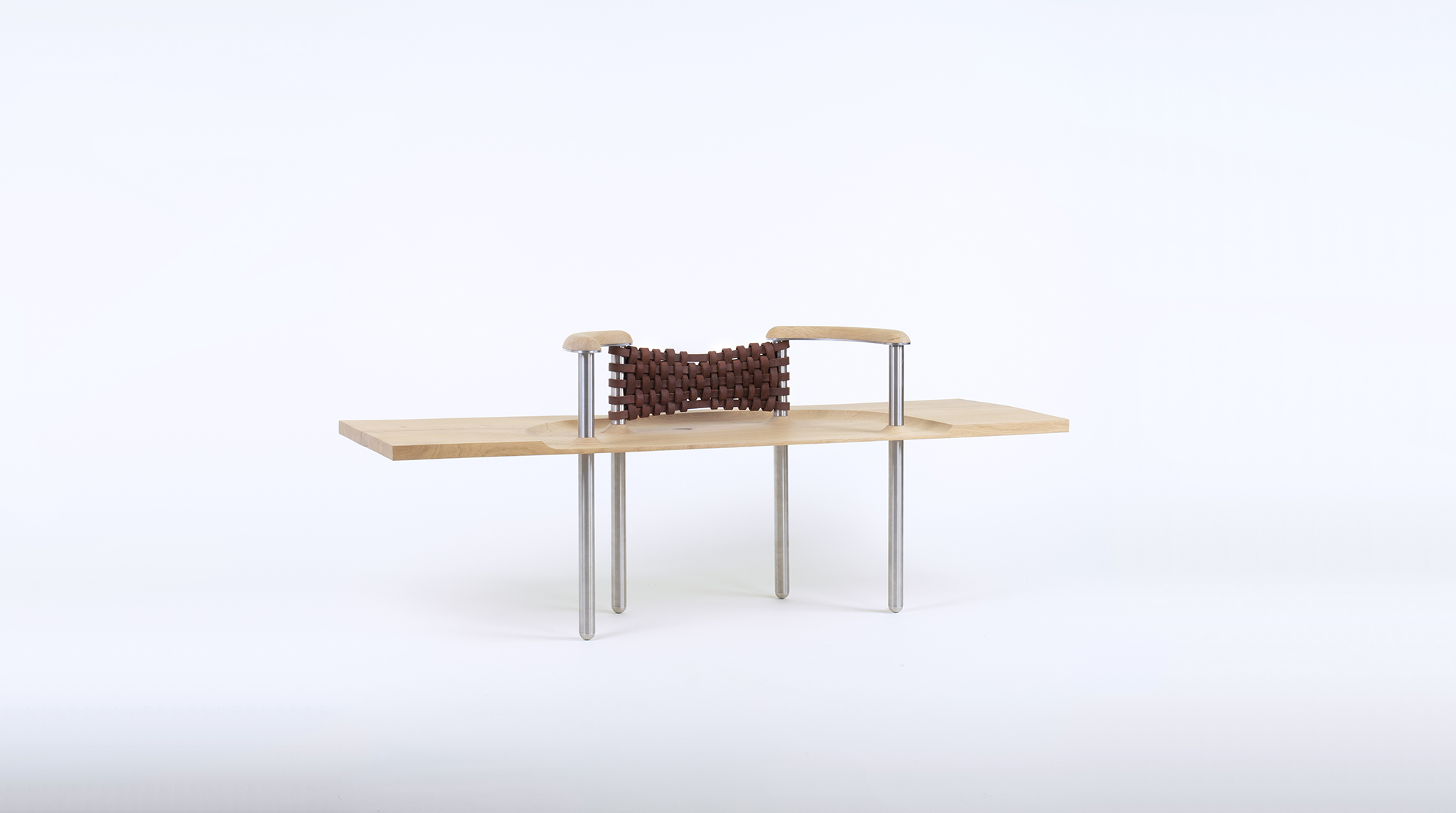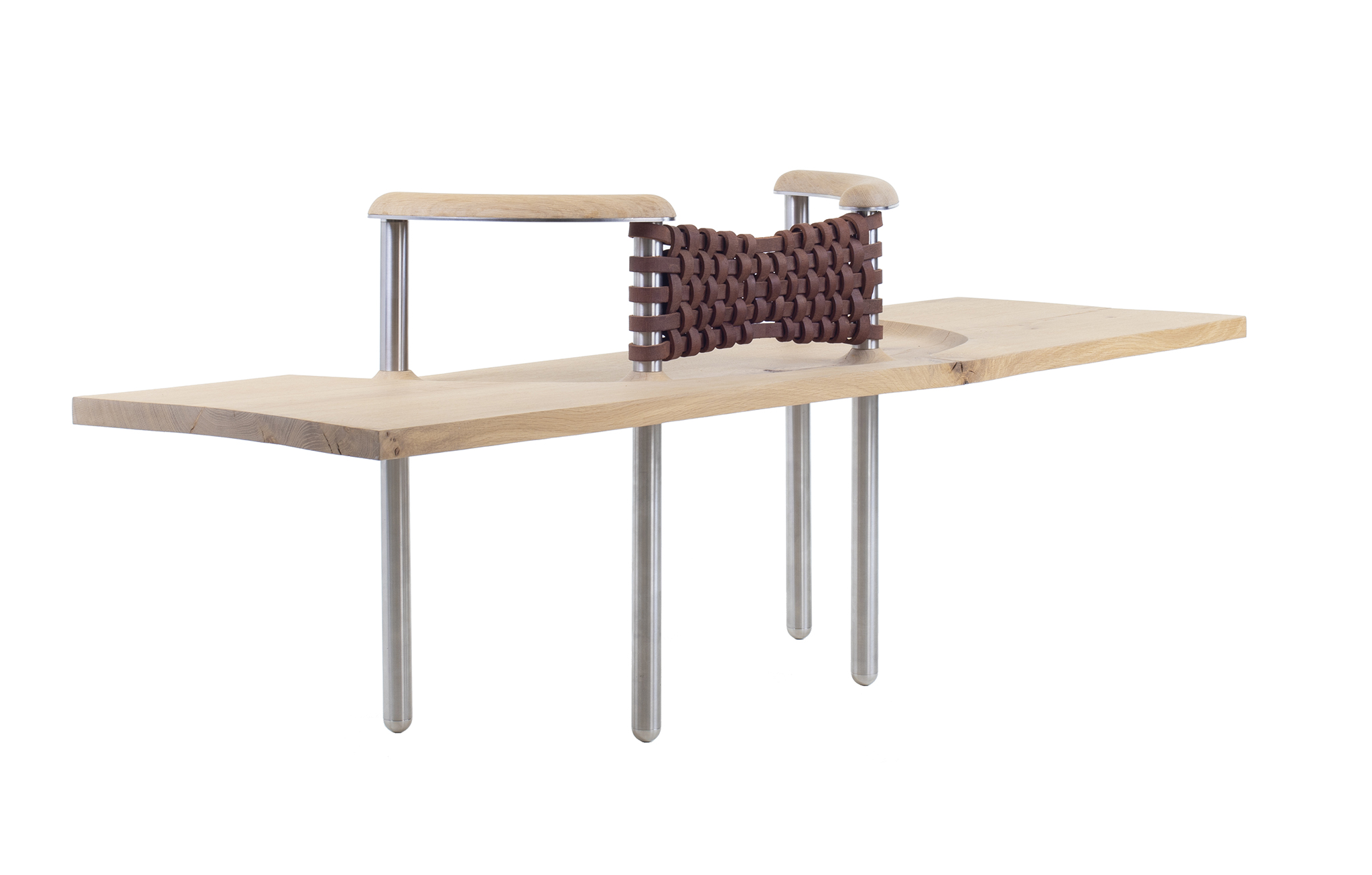
When machine-made meets craft
DATE
2018 – 2021
COLLABORATION
Dragovan Paris – Laurent Jardin, Leather Alchemist (for parts S1 to S4)
COLLECTION
10 Pieces
EXHIBITIONS
– CAC Brétigny, France – 2018.
– Lake Como Design Fair, Italy (curated by M. Ratti) – 2019
– Collectible Design Fair, Belgique (represented by ItsGreatDesign Gallery) – 2020
– Exhibition « Noir Brussels », Belgique, VIP TOUR Art Brussels – 2020
– Charles Burnand Gallery, Londres – 2022
– Collect Art Fair, Londres, Somerset House – 2022
PHOTO CREDITS
@ Gilles Rivolier, © Graham Pearson
It’s often said that a piece of furniture adds the finishing touch to an architectural project. We believe furniture makes architecture.
Their obsession to bring together is actively present within their practices, with the combination of their knowledge and experiences with other partners, it can be seen in the very form of their created ‘objects’.
This project began during spring of 2018 in collaboration with the leather artist Dragovan with whom they created two small prototypes (Salon s-1 and s-2) combining sheet metal work and stainless steel turned with manual work of leather. This resulted in the creation of two 25-centimeters high Japanese-style low seats, where the stainless steel sheets and ‘studs’ constrain large pieces of soft or braided leather.
A bench with carved oak armrests (Salon s-3), stainless steel legs and braided leather backrest was shortly added to the embryo of Le Salon, still with Dragovan. Higher than the first two, longer than it is deep, this narrowness accommodates a more restricted and tense sitting experience.
Besides, for the latter, in their workshop, they shaped an oak from Burgundy.
The fourth and last seat (Salon s-4) is much more complex, and certainly more conventional in its ergonomics. Wide and deep, it is made up of metal sheet, struts and stainless steel stiffeners, and a woven backrest designed much as a dorsal corset hugging the lines of the backbone and shoulder blades.
Le Salon has been developed from their desire to create a sharing space, where everyone can gather around one single centre. They picture it as a scene with protagonists of different physionomies and physiologies, with a variety of personalities. In the universal configuration of the agora, this theatre of objects is enclosed in its centre. Thereby, they evoke fictions around the idea of a group, looking for a formal identity of the whole while identifying each part of it.
They are therefore looking for special features of each piece of furniture through the techniques used, while preserving the dialogue between a deliberate industrial framework with its tools and contraints and the ergonomic design of basic skin or flesh.
The results are seats with precise lines in which gesture has a central place, the one of sitting down.
To sit and watch, to sit and talk, to sit and experience…
This is a universal, timeless and multicultural evidence, or even the
obsession of an entire civilization.


